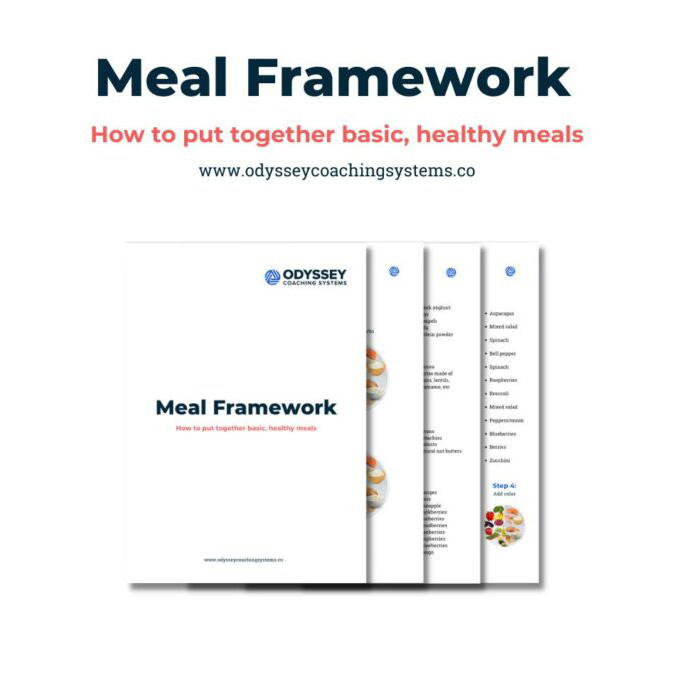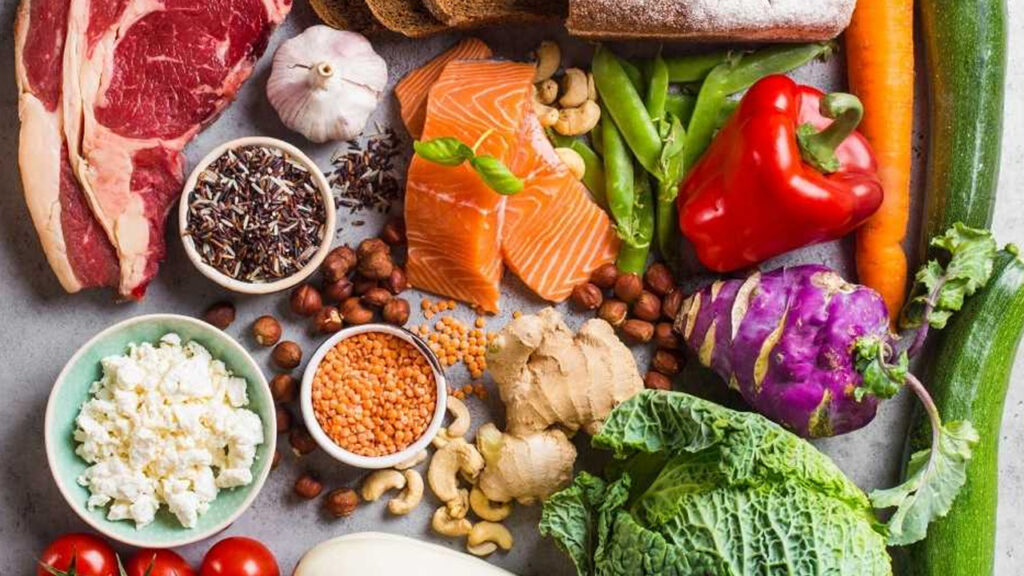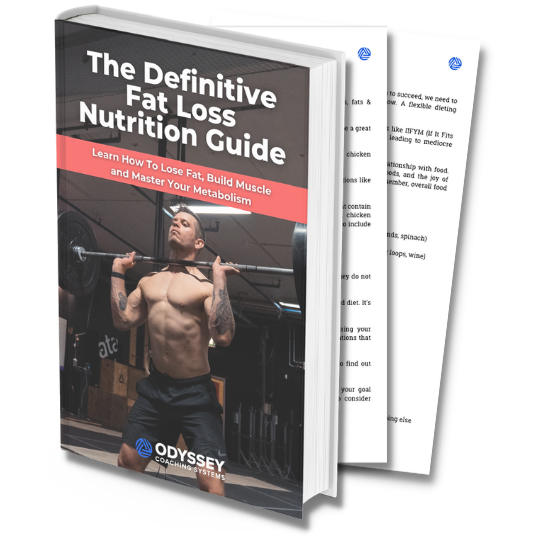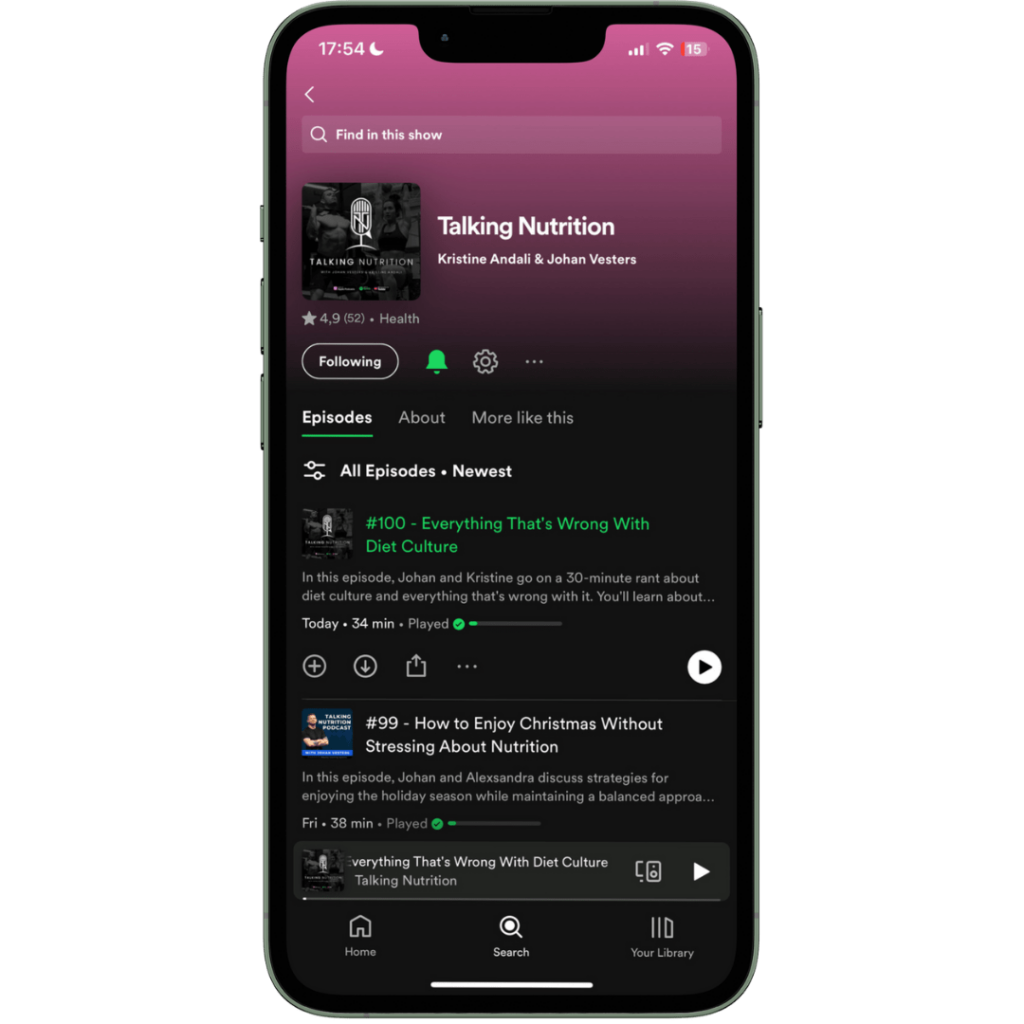Main Take-Aways
1. You don’t have to be on ‘a diet’ to reach your long term health and fitness goals.
2. There are no good/bad foods, but context always matters. Just how science isn’t based on a single study, your diet won’t be healthy or unhealthy because of a single food (group).
3. Flexible Dieting allows you to enjoy flexibility in moderation, by eating mostly minimally processed foods.
One of the most common questions I get is “What is healthy food?”. This always brings me back to my own 30kg weight loss journey, which started off exactly like that. No idea what to eat, how much, or what NOT to eat..
The restrictive diets never seemed to work in the long run.. I’d lose some weight, regained it all, lost some, regained it again. Something was off..
Turns out, you don’t have to be on ‘a diet’. There is no such thing as good/bad food. You also don’t have to focus on restricting specific foods or food groups.
In this article we’ll first define what makes something a Healthy Food. Then we’ll briefly talk about Diets, Good and Bad Foods, and Flexible Dieting. Lastly, I’ll give you specific Lists of Food Sources to get inspiration from, and show you how to come up with Healthy Meals that will support your long term health and fitness goals.
What is healthy food?
Before we dive into the actual foods you want to include in your healthy diet, we first need to define what makes something a Healthy Food.
It depends.. But in general, these are some main considerations to make when it comes to deciding if a certain food supports your goals. Answering these following questions will give you a good start.
- Depending on what phase you’re in, does it fit within your daily/weekly caloric budget?
- Does it give you enough of each macronutrient: Protein, Carbs and Fats?
- Micronutrient wise, what are you getting in terms of vitamins, minerals and other beneficial compounds?
- What about fiber and water?
- How satiating is it?
- Lastly, do you enjoy eating it?
Does eating healthy mean that you need to be on ‘a diet’?
Probably one of THE reasons many people are confused when it comes to nutrition, is the fact that different diet camps will claim that their specific diet is the one and only approach that everyone should follow.
It’s either High-Carb, or full blown Keto. Carnivore or vegan. Only eating clean, or IIFYM (If It Fits Your Macros). And the list goes on..
So, who’s right? They all seem to have research to back up their claims, at least so they say.. Though the issue here is that a lot of the research is often carefully cherry-picked and/or twisted to conveniently fit a someone’s bias or agenda.
A great example of this is The Game Changers documentary. Luckily there are people like Layne Norton who go out of their way to debunk and clear up nutritional misinformation.
The best diet for you
Here’s a crazy idea. What if we instead zoom out, and look at the commonalities between ALL of the research? What if the answer actually lies somewhere in the middle, and we can learn something from multiple different camps?
What if, instead of looking for the next ‘new’ diet that sounds really promising, we find out how to improve your diet and what works best for you?
Good foods and bad foods
Whether it was sugar, cholesterol, artificial sweeteners, carbs, etc… You’ve probably been told to avoid specific foods or food groups at some point in time.
But no foods are really inherently bad. What matters is the context. Just how science isn’t based on a single study, your diet won’t be healthy or unhealthy because of a single food (group).
Does the combination of all the foods that you’re eating include enough macros, micros, fiber and water? Are you able to control energy balance this way?
Yeah? Then you probably don’t have to avoid any ‘bad’ foods.
“What is healthy food?” – FREE Meal Builder Guide
If you follow these flexible guidelines and put together most of your meals with foods from the lists (or similar), you should be good. As long as you manage to keep your energy balance in check, whether that means tracking or not. Did you find this article useful? Feel free grab your free downloads below!What should I eat? – Flexible Dieting
Finally! NOW we’ll get into the actual food choices. I won’t tell you to avoid any foods. Other than stuff that you’re allergic/sensitive to or that has gone bad, nothing’s really off-limits. But remember, context does matter and you do want to mostly include foods that match the criteria we discussed earlier.
This is where Flexible Dieting comes in, a sustainable approach that is more of a set of guidelines rather than a traditional diet. Flexible Dieting is based on the concept of mostly (about 80% of calories) eating nutritious, minimally processed foods while allowing for flexibility in moderation (about 20% of calories). This allows our online nutrition coaching clients to A) work towards their goals, while B) keep things flexible.
The 80/20 principle can be applied to just about everything, and I highly recommend prioritising consistently doing good most of the time over trying to be perfect all the time. That also means that ‘failing’ is not really a thing. Instead, you assume and welcome the imperfect days, learn from them, and move on by simply picking things up the next day.
Flexible Dieting checklist
If you consistently tick the following boxes, you are absolutely killing it on the nutrition side of things. While controlling energy balance, aim for:
- Protein with every meal.
If you track macros, feel free to use our free TDEE and macro calculator to calculate your requirements.Not tracking? No worries. Simply aim for about a palm sized portion (or two), or about the quarter of your plate.
- Get your Omega 3’s
To include enough of the healthy anti-inflammatory fatty acids EPA and DHA, aim to include cold-water fish like salmon a few times a week.If you don’t regularly eat fish, consider supplementing with a quality fish oil, or algae oil if you are vegan. 2-3g of EPA and DHA combined seems to be a good range to aim for.
- Daily fruits
Aim for 1-3 fist sized servings of fruit per day. This will give you tons of micronutrients, fiber and water, which are important for health, digestion and satiety. - Daily veggies
Aim for 2-4 fist sized servings of vegetables per day for similar reasons as fruit intake. Veggies are usually even lower in calories than fruits, which allows you to keep food volume up even when dieting.
Join our private fat loss community for free resources including our Meal Builder guide, Protein Cheat Sheets, live trainings, and more!

- Hydration
The easiest way to cover your hydration is by simply drinking when you’re thirsty. It’s almost like we’ve evolved with a thirst response for a reasonIf you want to make sure you’re getting enough and would like to track your water intake for a few days to double check, do the following. Aim for about 30-40ml per kg of body weight – 1L because you typically get about a liter from food.
Around training, aim for an additional 0.5-1L per hour of training. Also during warmer and/or more active days (say you go for a hike), make sure to keep drinking plenty of water.
- The 80/20 Rule
About 80% of your calories should come from whole / minimally processed foods. 20% can come from anything else. Now you don’t have to calculate this ratio, but keep that principle in mind. Eat minimally processed foods most of the time, to allow for flexibility in moderation.
*As for your daily/weekly energy balance, tracking macros is most likely going to be your best bet. This should teach you the most about foods, nutrients and food portions. Alternatively you could go with a hand portion or plate method, which can be effective when done right.
** Your carb/fat ratio will depend on many factors including activity level, preferences, goals, as well as your TDEE and protein requirements. Tracking macros will also help you figure out what works best for you. If you’re not tracking macros you can aim for about a quarter up to a third of your plate for your carbs and fats combined.
How to build a healthy meal
While recipes and meal plans can be great for inspiration, I’d much rather show you how to put together your own plan and meals. That way you can start to play with different combinations yourself, and find out what you do and don’t like. That way you’ll know how to put together your nutrition, even when you’re busy or on a trip.
The way our online coaching clients are recommended to put together their meals is by following these 4 easy steps:
- Start with a protein source.
- Add a starchy carb.
- Then add some healthy fats.
- Finally, add some color (from fruits and/or vegetables).
Recommended food sources to include in your diet
You’re by no means limited to the foods in these lists, but when you look at these lists the idea is pretty clear. Try to mostly aim for ‘real’ foods, and you’re going to be fine.
Beef (ground, steak, etc.)
Chicken (breast, thigh, etc.)
Cod
Cottage cheese
Crab
Eggs
Eggwhites
Greek yoghurt
Lamb
Pork
Quality vegi ‘meats’
Reindeer
Salmon
Seitan (*gluten)
Shellfish (e.g. prawns)
Skyr
Tempeh
Tofu
Trout
Tuna
Turkey
Wild game (Local. e.g. deer)
*Protein powders: Whey, casein, pea,soy, hemp, etc…
Barley
Beans
Buckwheat
Corn
Couscous
Legumes
Lentil/bean pasta
Lentils
Oats
Potatoes
Quinoa
Rice
Sweet potatoes
Tortillas
Whole wheat bread
Whole wheat pasta
Almonds
Avocado
Avocado oil
Brazil nuts
Cacao
Cashews
Chia
Coconut (fresh)
Egg yolks
Extra virgin olive oil
Flax
Hemp
Natural nut butters
Olives
Peanuts
Pecans
Pesto
Pistachios
Pumpkin
Sesame
Walnut oil
Walnuts
Apples
Bananas
Blackberries
Blueberries
Clementines
Cloudberries
Cranberries
Grapes
Mango
Oranges
Pears
Pineapple
Raspberries
Strawberries
Alfalfa sprouts
Artichoke
Asparagus
Beets
Bell peppers (any colour)
Broccoli
Brussels sprouts
Butternut squash
Cabbage
Carrots
Cauliflower
Celery
Cucumber
Eggplant
Garlic
Ginger
Green beans
Kale
Kohlrabi
Lettuce
Mushrooms
Onions
Radish
Shallots
Spinach
Squash
Tomatoes
Turnip
Sample Meals
- Chicken breast, rice, cashew nuts, broccoli.
- Salmon, sweet potato, extra virgin olive oil, asparagus.
- Ground beef, tortillas, avocado, cucumber.
- Tempeh, quinoa, walnuts, bell pepper, mango.
- Protein powder, oats, peanut butter, raspberries.
Make sure to check out these free fat loss and muscle gain meal plans too!






